 For more than a thousand years, Kyoto was the imperial capital of Japan. Tokyo may now be the center of business and government, but Kyoto remains as Japan’s spiritual and historic heart.
For more than a thousand years, Kyoto was the imperial capital of Japan. Tokyo may now be the center of business and government, but Kyoto remains as Japan’s spiritual and historic heart.
Kyoto is a busy vibrant city with a population of over 1.4 million people. Like any other Japanese metropolis it has an eclectic mix of old and new, with ancient shrines dwarfed by skyscrapers and department stores. Kyoto, however, has managed to retain far more of its past than other, more modernized, Japanese cities. It was spared the ravages of aerial bombardment during World War II, and has survived-relatively unscathed-the tsunami of concrete and architectural monstrosities that followed the war. Hidden amongst the contemporary buildings are secret gardens, shrines and temples. Along the narrow alleyways of Gion, visitors can sip jasmine tea and wait for a fleeting look at Asia’s most iconic figure, the geisha.
It would be impossible to see all that Kyoto has to offer in a single year, let alone a few days. There is not just one temple, but hundreds to be explored. Not just one national treasure, but dozens of unique and priceless buildings. For most “pilgrims” to the city the best they can hope for is to see some of Kyoto’s highlights. Many will leave with the firm intention of returning for another glimpse into Japan’s past.
Kiyomizu Temple
Kiyomizu-dera, or The Pure Water Temple is one of the most famous religious sites in Japan. Founded in 780, it is associated with Nara Buddhism, the oldest sect within Japanese Buddhism, and is dedicated to the 11-faced Buddhist deity Kannon. The temple is situated on the tree-covered hills to the east of Kyoto, approached by steep, narrow streets. The most famous feature of Kiyomizu-dera is its terrace which juts out the side of the hillside supported by over a hundred wooden pillars. From the platform, visitors can gaze over the treetops down onto the city. The panoramic view has been admired by pilgrims and tourists for well over a millennium.
The temple gets its name from the small waterfall a couple of hundred feet below the main buildings. The spring water is said to have healing powers and provide longevity. There is usually a line of visitors, both young and old, waiting with scoops to catch the water as it cascades into a small pool. As Japan has the longest life expectancy in the world, the waterfall’s powers may be more than just superstition.
From Kiyomizu-dera visitors can stroll down toward Yasaka Shrine along Sannen-zaka and Ninnen-zaka. These two traditionally paved streets are lined with craft stores, noodle vendors and gardens. The narrow winding alleyways can be exceptionally crowded, so head there early or prepare to use your elbows.
Gion District
Gion is the famous geisha district situated on the eastern banks of the Kamo River. Modern architecture and businesses mean that you have to look hard for the more traditional areas, but they do exist. Hanami Street has beautiful old buildings, teahouses and restaurants. After sunset, red lanterns glow outside the doorways of the teahouses, but they tend to be extremely exclusive, and not for tourists. “Gion Corner”, however, is a small theater that has evening shows during which you can see a brief glimpse of the geisha arts like koto, tea ceremony, dance and flower arranging. Also, close by is the Ryozen Kannon, an imposing 24m concrete statue that is dedicated to soldiers who died in WWII.
Pontocho Street
Pontocho is a narrow alleyway between the traditional wooden ocha-ya teahouses. It is along this street that visitors have the best chance to see a working geisha outside of the Gion District. Dressed in kimono with their ghostly white faces and scarlet lips they scuttle between the various restaurants to entertain their prestigious, or at the very least wealthy, clients. The street runs from Shijo-dori (4th Street) to Sanjo-dori (3rd Street) one block west of the Kamo River. During the summer evenings patrons of the teahouses move out onto wooden decks that overlook the river. The clients can then drink their sake while admiring the stars and glowing lanterns.
Kinkaku-ji Temple
Kinkaku-ji or The Golden Pavilion is the main building at the Zen temple known as Rokuon-ji. Originally the pavilion and its grounds were to be home for the retired shogun Ashikawa Yoshimitsu. When Yoshimitsu died in 1408, the residence was converted into a Zen temple and has continued as such since that time. The outer surface is covered in gold-leaf on Japanese lacquer making it instantly recognizable and highly photogenic. In 1987, the pavilion was restored with a thicker more extensive coating of gold-leaf. The gardens are also designated as a Special National Historic and Scenic Site by the government. The Kyoko-chi, or Mirror Pond, lies in front of the main building and, on windless days, the pond’s surface reflects the Golden Pavilion and the gardens surrounding it.
Ginkaku-ji Temple
The Silver Pavilion, Ginkaku-ji, is located in the Tozan Jisho-ji temple at the foot of the eastern hills. Like Kinkaku-ji, the temple was built as a retirement villa, in this case, for the shogun Ashikaga Yoshimasa. The Silver Pavilion, however, was never covered in silver and remains as a far more modest structure. The building and its gardens were also converted into a Zen temple after the shogun’s death. The garden is famous its sand landscapes, where white sand has been raked into waves and two large piles, the Moon Mound and the Sea of Silver Sand.
Ginkaku-ji can be reached by following the Philosopher’s Path. The route meanders alongside a small river under the branches of cherry, willow and maple trees. The path is especially popular when the trees are laden with blossoms.
Ryoan-ji Temple
Ryoan-ji is a Zen temple in northwestern Kyoto, famous for its rock garden. The garden is about the size of a tennis court, surrounded by low earthen walls. The dry landscape garden consists of 15 large and small rocks on a bed of white sand, and is said to be the ultimate expression of Zen Buddhism. The rocks may represent islands in a turbulent sea, but similar to modern art, interpretation is left to the viewer. Loudspeakers and tour groups, however, tend to destroy the possibility of reaching any Zen like state.
Nijo Castle
Imposing outer walls, a double moat and beautiful architecture made Nijo Castle a constant reminder to guests of the power and wealth of the Shogun Ieyasu Tokugawa. Nightingale floors that “sing” (creak) as you walk along them alerted guards to ninja who might try to cut his reign shot.
Toji Temple
Toji Temple was built in 794, the year that Kyoto became Japan’s capital. There are sacred carvings of Buddha in both the temple’s main hall and lecture hall, but the temple is most famous for its five-story pagoda. At 180 feet (56 meters) the pagoda is the tallest wooden structure in Japan. Its importance and historical significance led to it being chosen as one of the UNESCO world heritage sites.
Fushimi Inari Shrine
Fushimi Inari Shrine is dedicated to Inari, the Shinto god of rice and sake. The shrine is worth visiting to see the tunnel of bright red torii gates that winds its way up the side of the mountain. The gates are donated by wealthy individuals or companies who wish for good fortune. The benefactors have their names inscribed on the uprights of the gates.
The god Inari was supposed to have used foxes as messengers so the shrine has a distinct fox theme to it. There are fox shaped prayer tablets, and the restaurants serve noodles with tofu or tofu wrapped rice — the supposed favorite foods of foxes. It is probably best to stay well clear of the other local delicacy: barbecued sparrow on a stick.
Arashiyama
A short ride on the Keifuku Electric Railway takes you to Arashiyama on the west side of Kyoto. There are more beautiful temples which are well worth checking out, but for those who are “templed-out” check out the beautiful bamboo groves between the temples.
Arashiyama Monkey Park is at the top of a hill overlooking Kyoto. It’s a short hike to the top, but it’s a great experience to get up close to the wild monkeys. They are not fenced in but hang out for the regular supply of food given by the park staff.
The Katsura River runs through Arashiyama and in summer is the location for ukai ( cormorant fishing ). Fisherman place leashes on the birds and then on summer evenings take to the river in boats. When the cormorants catch a fish they are brought back into the boat where their fish is taken from them. I presume the birds get to keep the occasional fish themselves.
What to buy
Kyoto has branches of the main Japanese department stores, which sell virtually everything from kimono through Chihuahuas. Kawaramachi is the most famous shopping district located on Shijo-dori (4th Street) with a variety of shops and restaurants. Kyoto also has a large number of specialist craft stores selling items such as ornate wooden combs, handmade washi paper or the scarlet bamboo umbrellas. Other popular souvenirs include the regional teas, incense and ceramics. The easiest, and often cheapest, place to buy items is in the small stores outside temples. They usually carry a variety of traditional items along with candy, plastic spiders and pellet guns for the hordes of Japanese junior high students.
If you are more serious about shopping then there are boutiques that cater for the discerning buyer. Elegantly dressed sales staff will be more than happy to show you the latest designs in silks or hand-glazed ceramics. It is worth remembering, however, that a quality kimono may cost as much as a family car.
When to go
Mainland Japan has a temperate climate with four distinct seasons. Cherry blossom viewing in early April is fantastic, but it is also crowded, fully booked and expensive. Avoid the major national holidays of Golden Week in May or Obon in August, due to the high prices of travel. November is a good time to visit as the fall foliage provides a magnificent backdrop to many of the temples. Winter, although cold, lacks crowds and offers the possibility of temples topped with snow.
The Aoi Matsuri or Hollyhock Festival on May 15th has a parade of people dressed in period costumes moving between the two Kamo shrines, along with demonstrations of classical archery.
On August 16th, the Gozan Fire Festival takes place with 5 symbols burned into the side of the mountains around Kyoto. The most famous is Daimonji, a giant burning “big” kanji.
In July, the city holds the Gion Festival which has events throughout the month. The main festivities are from the 14th to the 16th leading up to the main procession on the 17th. On this day, giant floats covered in ancient textiles roll through the city centre dragged by teams of men.
On October 22 there is both the Jidai Matsuri during the day and the Kurama no Hi Fire Festival in the evening.
Getting There
Osaka’s Kansai International Airport is the closest international airport to Kyoto. The quickest way to get to Kyoto from Kansai International is by the direct JR Haruka Limited Express (about 70 minutes and 4,000 Yen). Direct airport buses take about 100 minutes and cost 2,500 Yen. Osaka Itami Airport is the main domestic airport for Osaka. There are limousine buses that run from the front of the airport to the major hotels and Kyoto Station. The journey takes just under an hour and costs around 1,500 Yen. Kyoto is also easily accessible from anywhere else in Japan via the efficient Japanese rail system. With access to the Shinkansen bullet trains, Kyoto is just a 2-hour 40-minute ride from Tokyo.
Getting Around
Most visitors will arrive at Kyoto Station as it serves as the hub for both bus and train services. The station itself is one of Kyoto’s most famous, if not notorious, landmarks. The enormous steel and glass structure houses a shopping complex and theater as well as the train platforms, but has a generic airport terminal look. The ultra-modern design manages to be functional, but has no architectural connection with the ancient city.
Central Kyoto features a rectangular street system. Running north-south through the city is the Kamo River. The tree-lined paths running along the sides of the river provide and alternative way to move about the city and are particularly popular with Kyoto’s bicycle commuters. The public transportation system consists of city buses and two subway lines. The buses can be very crowded around national holidays, so if you only have limited time, taking a taxi is probably the fastest and most convenient way to get to the various attractions.






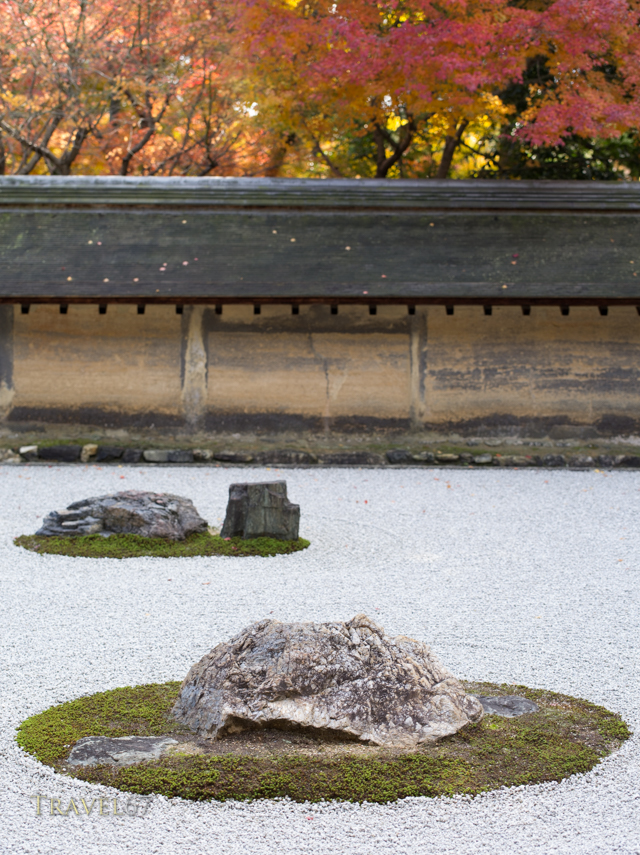



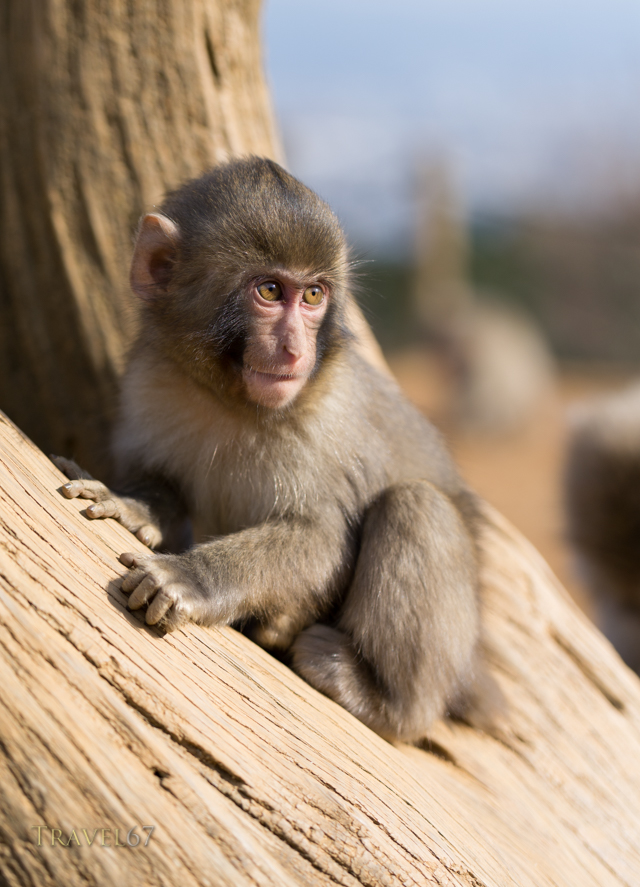
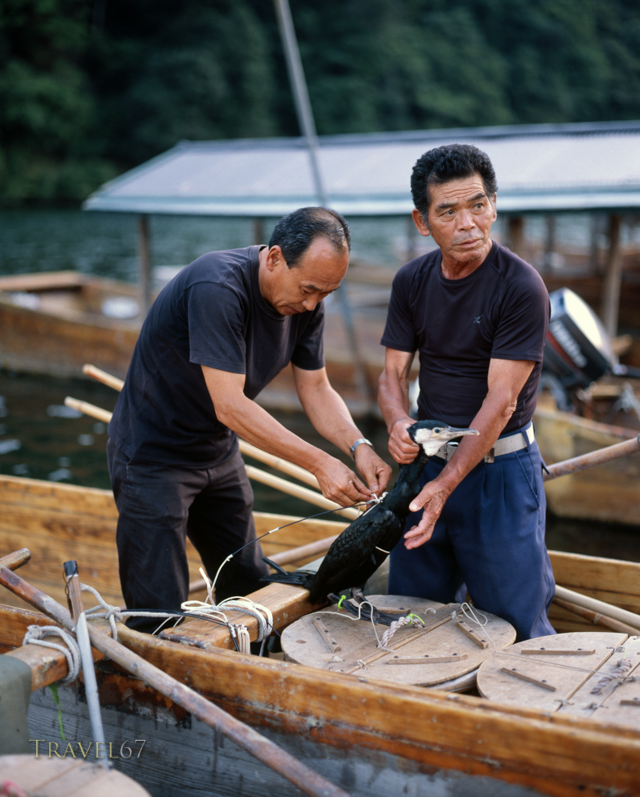

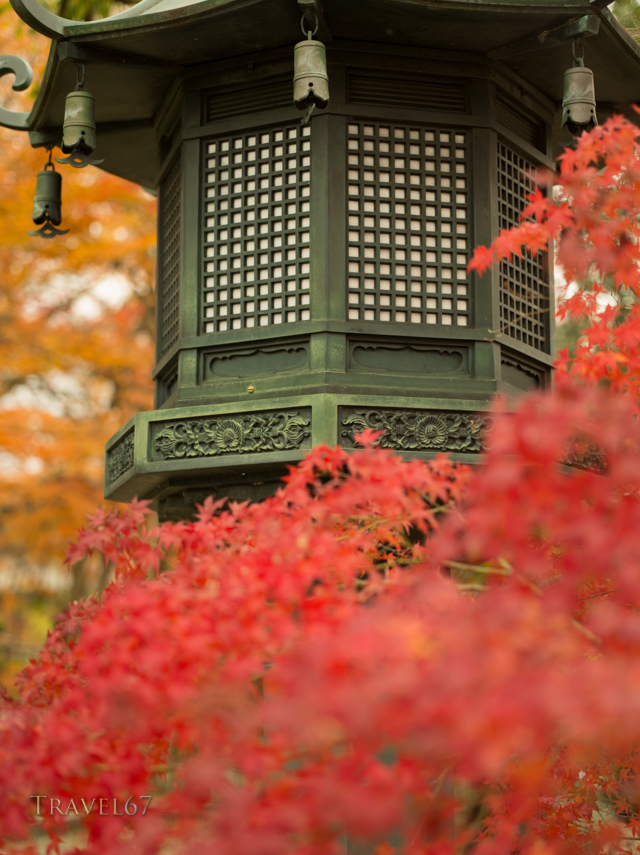


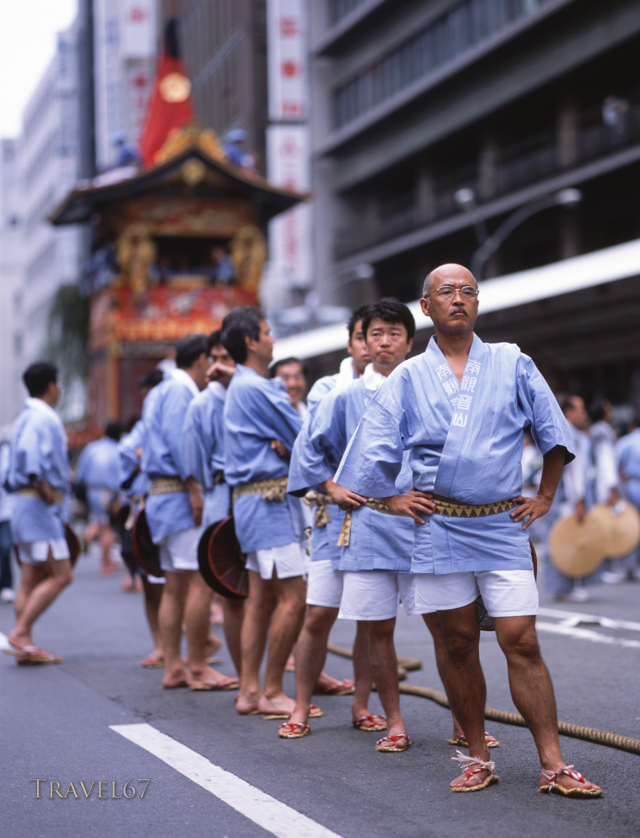
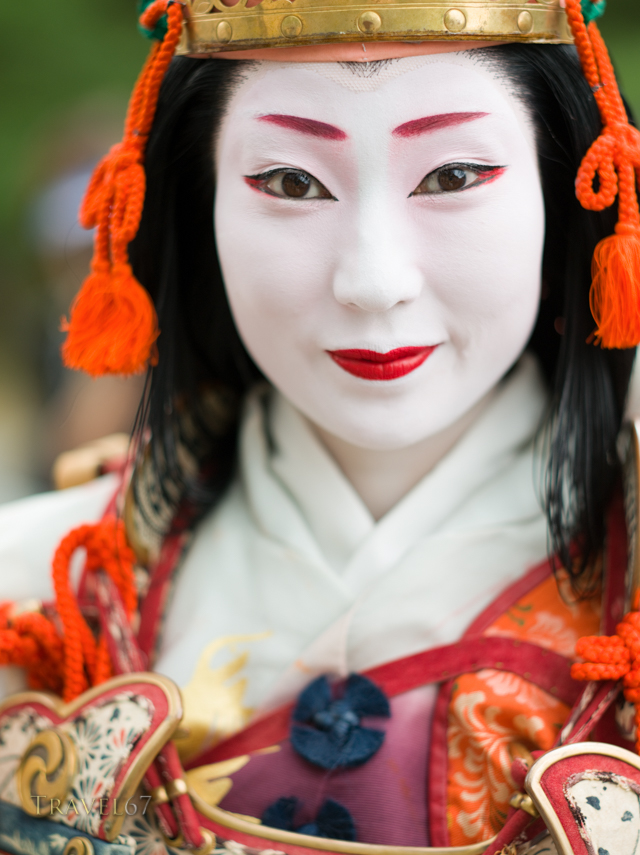

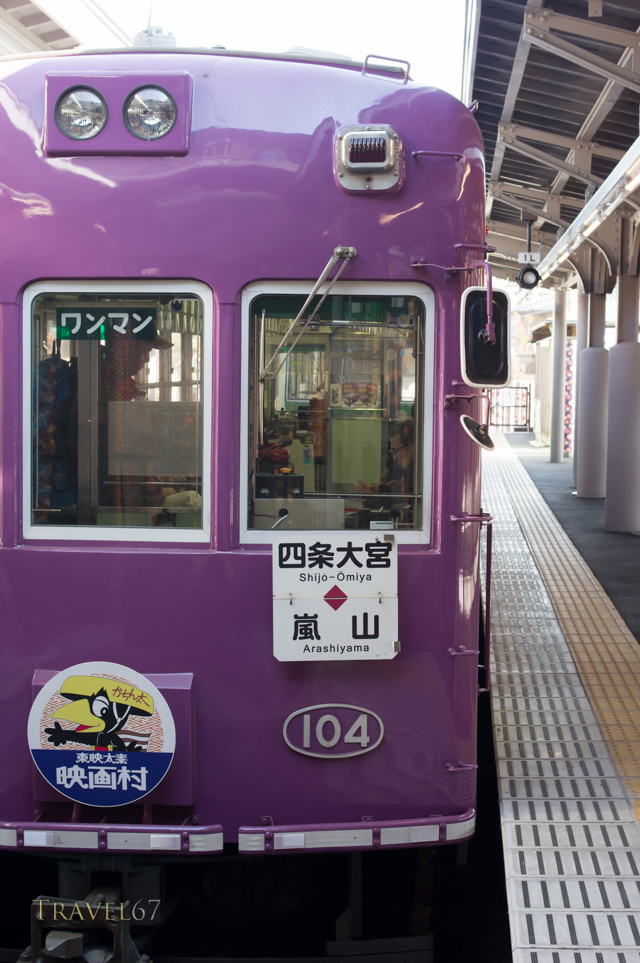
This is a wonderful post, with such lovely images and ideas. I have many Japanese friends who speak very highly of Kyoto.
Never had I heard one mention a sparrow on a stick, so perhaps it’s only at that one place.